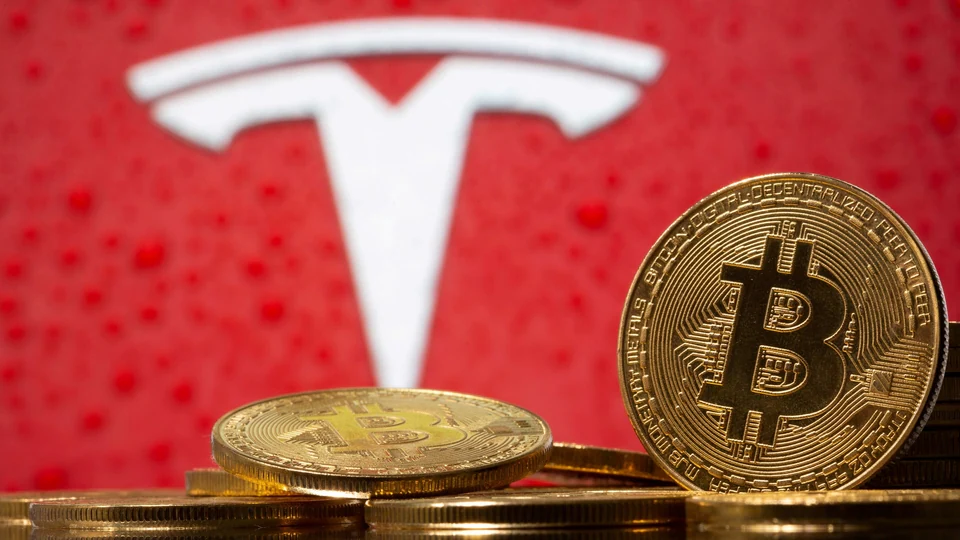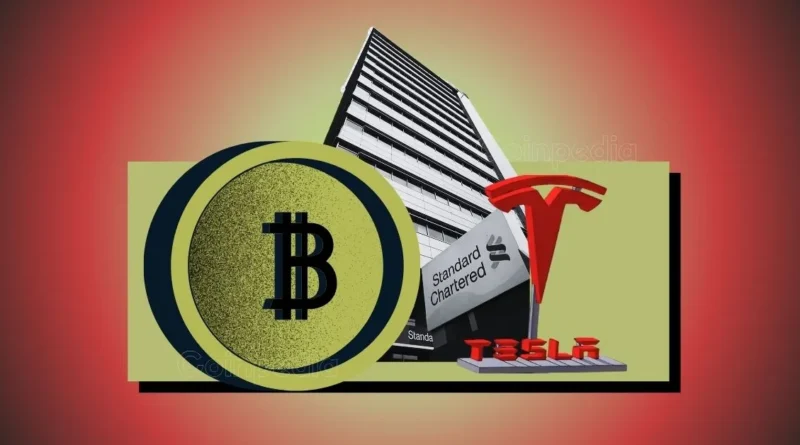Bitcoin Could Be More Like Tesla and Apple Than You Think
In the constantly changing world of innovation, few names evoke as much interest as Tesla, Apple, and Bitcoin. On the surface, these three appear worlds apart: one builds electric cars, another creates consumer electronics, and the third is only digital money. But under the surface, Bitcoin has a remarkable DNA in common with these industry leaders—disruptive vision, cult-like devotion, and a rollercoaster ride to mainstream acceptance. That’s why the tale of Bitcoin could be following the paths of Tesla and Apple closer than you think.

Disruptive Innovation: Rewriting the Rules
Tesla and Apple didn’t just join their respective markets—they shattered them. Tesla upended the century-old automotive industry by betting on electric vehicles (EVs) when skeptics declared them uneconomical. Apple transformed personal technology with the iPhone, taking a communications device and turning it into a lifestyle hub. Both companies were mocked in their formative years (“Too niche!” “Too expensive!”), but their uncompromising commitment to long-term vision paid dividends.
Bitcoin too is a disruptor. Bitcoin brought blockchain technology—a distributed ledger technology—to disrupt traditional finance. By eliminating middlemen like banks, Bitcoin promised faster, cheaper, and more transparent transactions. Critics at first wrote it off as an enabler of criminal enterprise or a flash in the pan, just as they wrote off EVs and smartphones earlier. But as Tesla and Apple created new markets, Bitcoin sparked a $1 trillion cryptocurrency revolution, forcing institutions to confront decentralized finance (DeFi).
Cult-Like Communities: The Power of Belief
Apple and Tesla don’t sell products; they sell identity. Apple customers wait in lines for hours to buy new iPhones, and Tesla owners proselytize their vehicles like missionaries. This loyalty is not a coincidence; it’s fostered through story, design mastery, and a sense of purpose. These groups become self-perpetuating ecosystems, fighting back against critics and driving organic growth.
Bitcoin has a comparable tribe. “Bitcoin maximalists” espouse its ability to democratize finance, organizing meetups, podcasts, and even a “Bitcoin Pizza Day” (commemorating the initial real-world Bitcoin transaction). Internet forums such as Reddit and Twitter are abuzz with arguments over its destiny. In times of market collapse, this fraternity doubles down, reminiscent of Tesla shareholders who held out through stock plunges or Apple enthusiasts who stuck out the 1990s downturn.
Volatility as a Stepping Stone, Not a Stumbling Block
Tesla and Apple’s share histories are classes in volatility. Tesla stock oscillated wildly as experts doubted its survival, climbing 700% in 2020 alone. Apple, having been on the verge of bankruptcy, became the first $3 trillion company. Both went through existential crises but came out even stronger, paying dividends to patient investors.
Bitcoin’s price fluctuations are even more spectacular. From $1,000 to $20,000 in 2017, then an 80% crash, followed by a peak of $69,000 in 2021—it’s a headline-grabbing rollercoaster. Critics point to volatility as evidence of its instability, but comparisons with Tesla and Apple lead us to conclude otherwise. Early enthusiasts who weathered the storms enjoyed outsized gains. Institutional investors such as MicroStrategy and Fidelity now hold Bitcoin as “digital gold,” hedging against inflation—a mark of growing legitimacy.
Long-Term Vision: Building the Future
Elon Musk and Steve Jobs were notorious for focusing on vision over immediate profits. Tesla’s mission—”accelerate the world’s transition to sustainable energy”—drove its gambles on Gigafactories and autonomous tech. Apple’s obsession with frictionless ecosystems (iPhone + Mac + Apple Watch) kept it ahead of the competition pursuing quick hardware victories.
Bitcoin’s North Star is just as ambitious: a decentralized, worldwide currency unencumbered by governments. Scalability challenges (e.g., Lightning Network for quick transactions) are being addressed by developers, while El Salvador’s adoption as legal tender suggests practical use in the real world. Regulatory challenges and energy controversies continue, but similar to Tesla and Apple, Bitcoin’s plan appears decades, not quarters, away.
Challenges: The Roadblocks to Revolution
No disruptive path is seamless. Tesla fought production hell and safety scandals. Apple encountered antitrust probes and supply chain nightmares. Bitcoin faces its own set of challenges: environmental issues related to mining energy, regulatory clampdowns, and scalability ceilings. But each of these hurdles provokes innovation—Tesla’s battery technology, Apple’s privacy capabilities, Bitcoin’s move towards renewable energy mining.
Critics are not incorrect to raise these concerns, but history demonstrates that hurdles tend to polish—not destroy—revolutionary technologies.
The Unstoppable Trajectory of Disruption
Tesla and Apple didn’t make products; they made cultural movements. Bitcoin is doing the same, moving from “internet money” to a financial paradigm. Its journey—like theirs—is complicated, divisive, and unpredictable. But the recipe for seismic influence is there: revolutionary technology, passionate believers, and a refusal to fit in.
As governments and institutions gradually adopt blockchain, Bitcoin may evolve from speculative instrument to underlying infrastructure—similar to how EVs and smartphones went from novelty to necessity. The coming decade will prove its staying power, but if history teaches us anything, it’s not wise to bet against the disruptors. than destruction—revolutionary technologies.
Click Here to subscribe to our newsletters and get the latest updates directly to your inbox.

